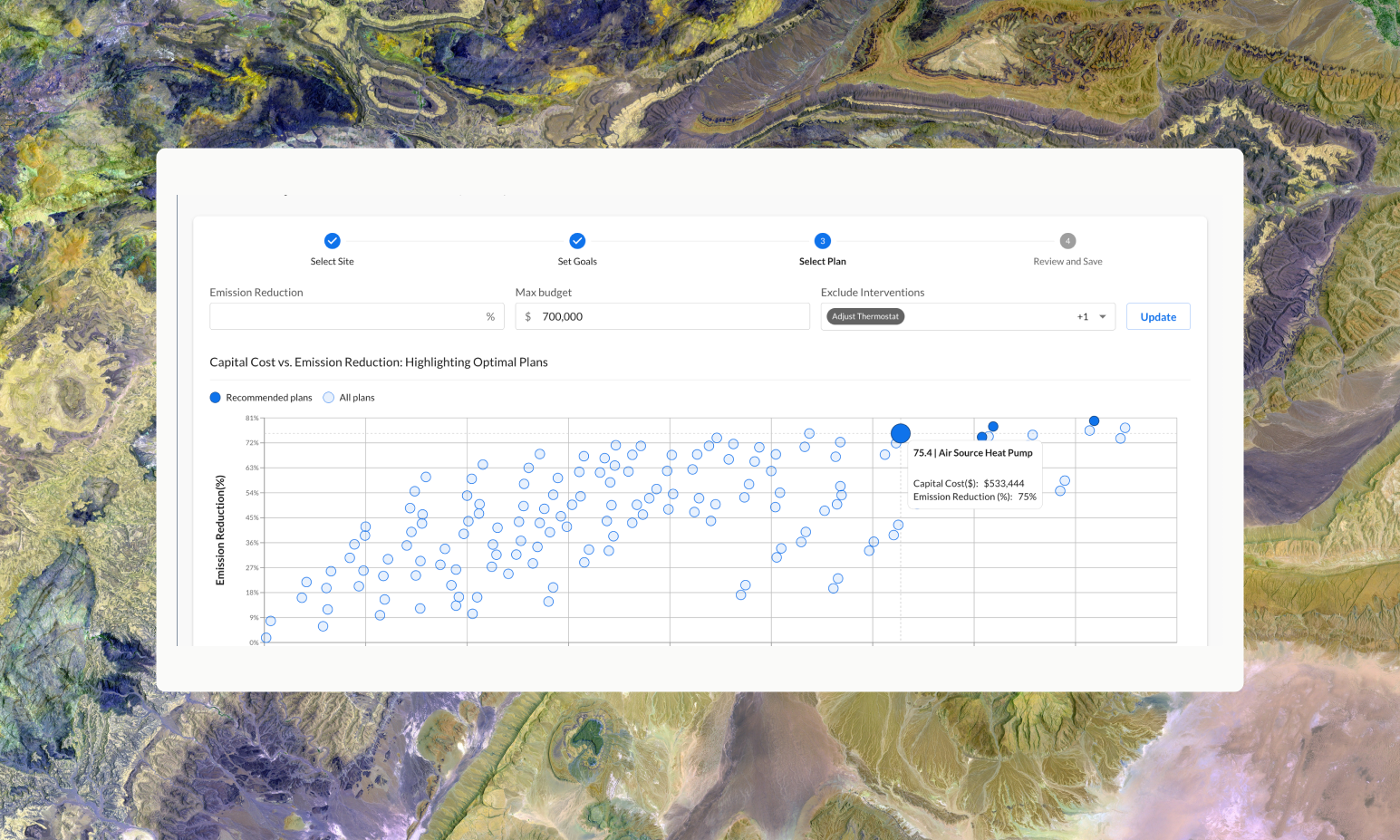Data Quality and the Right Tools: A Winning Combination
Data alone isn’t enough to drive proactive strategies—what matters is how that data is used. High-quality, granular data, when paired with advanced analytical tools, can unlock powerful insights that enable superior decision-making. Platforms that combine real-time data collection with predictive analysis offer the ability to model various climate scenarios, evaluate multiple sustainability initiatives, and prioritize the most impactful actions.
At NZero, our platform enables organizations to make data-driven decisions that reduce emissions, optimize energy usage, and meet regulatory requirements. This fusion of precise data and strategic tools is the key to making proactive strategies work in the real world.
Let me share two examples of NZero’s proactive strategies are driving climate action for its customers:
- Regional Airport: One of our clients, a regional airport, initially planned to install solar panels to reduce emissions. However, after analyzing energy data and local conditions, they discovered that electrifying the heating system offered greater environmental benefits. This proactive analysis allowed the airport to optimize its investment and maximize emissions reductions.
- Large REIT in New York City: Facing new local regulations, a major Real Estate Investment Trust (REIT) conducted an in-depth analysis of compliance costs and potential fines. They identified assets at risk of becoming economically unviable and proactively adjusted their portfolio to balance sustainability goals with profitability.
Navigating the Future: A Call for Proactivity
The climate challenges in the built environment are complex, involving technology, regulatory frameworks, and evolving market conditions. To stay ahead, organizations must:
- Adopt integrated approaches: Consider all factors—technology, regulations, and market dynamics—in sustainability planning.
- Continuously monitor changes: Stay updated on technological innovations and shifting regulations to ensure compliance and competitiveness.
- Develop adaptable strategies: Build flexible plans that can evolve with new information and emerging risks.
Proactivity is no longer optional—it’s a necessity. For executives and technical leaders, embracing this mindset will not only improve operational efficiency and regulatory compliance but also position their organizations as sustainability leaders.
Final Thoughts: Proactivity Drives Success
The future of the built environment’s climate impact hinges on our ability to plan strategically, anticipate challenges, and act proactively. By investing in integrated platforms, fostering a culture of innovation, and staying informed, we can turn climate challenges into opportunities for leadership and success.
As CTO at NZero, I am proud to say that we’ve been deploying proactive, data-driven strategies to reshape how we approach sustainability in the built environment. The future is bright for those who join us and choose to lead with foresight and strategic action. Let’s continue driving meaningful climate action—together.






